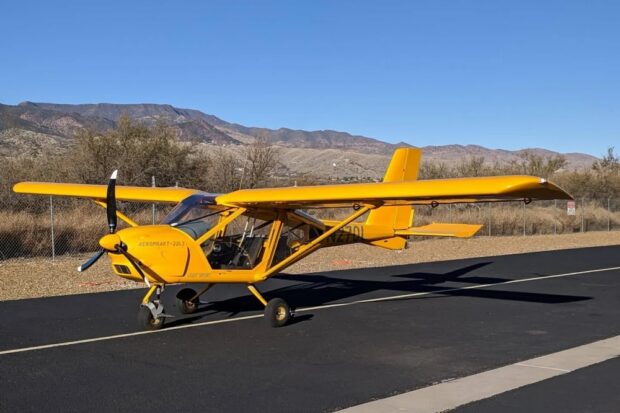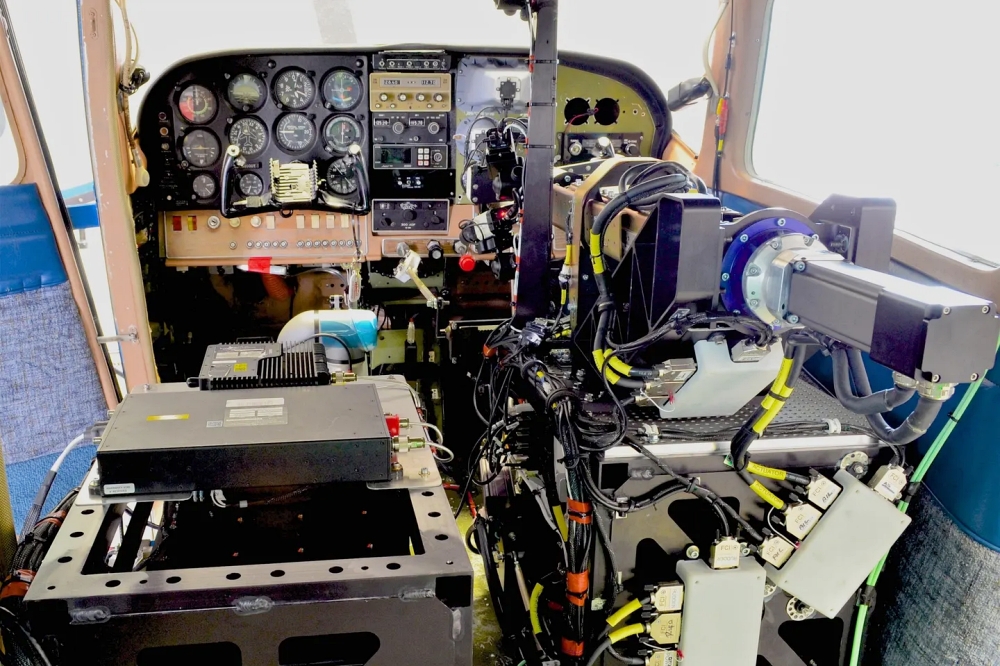To pull off one of its deepest strikes ever targeting Russia’s strategic industries, the Ukrainian government took a locally-made ultralight sport plane, swapped its manned controls for robotic controls and packed it with explosives.
Video of the emergency response following the Tuesday attack on the Alabuga Special Economic Zone industrial campus, 600 miles from the Ukrainian border, reveals that the drone—possibly two of which struck the campus—is based on an Aeroprakt A-22. A high-wing, single-propeller sport plane with room for two.
That the Ukrainians could convert an A-22 into an explosive drone strongly implies the strike on the Alabuga facility, which reportedly assembles Iranian-designed Shahed drones for Russia’s own war effort, won’t be the last for this new drone type.
The simple, reliable and innocuous A-22 after all lends itself to drone conversion. And equally importantly, it’s made in Ukraine—and it’s affordable at just $90,000 a copy.
To put that into perspective: an A-22-based drone, capable of traveling 600 miles through Russian air defenses to deliver—with high accuracy—potentially hundreds of pounds of explosives, costs just slightly more than a single American-made Javelin anti-tank missile costs. Ukrainian troops fire Javelins by the hundred.
An A-22 drone is, on a production level, scalable. Thus, “we expect that more attacks will be attempted in the future,” the Ukrainian Conflict Intelligence Team stated after analyzing the Alabuga raid, which reportedly injured 14 people and damaged either the drone factory or a nearby dormitory for workers.
The A-22 is the kind of plane a middle-class hobby pilot might buy for fun jaunts over the local airport. “If you’re looking for a rugged aircraft that’s easy to handle, has amazing short field performance, yet is capable of cruising at 95-plus knots, while (legally) carrying a good load—you’ve come to the right place!” Arizona-based Leighnor Aircraft, which deals the A-22 in the United States, boasted on its website.
“Control and safety,” Leighnor stressed. “Stalling is a non-event, even without flaps. … At slow speeds, the controls are light and effective—[and] at higher speeds they firm-up and make cruising a more relaxed affair.”
“Correctly proofed, metal structures are durable and resistant to the external environment,” the company added. “The best news yet, it all starts for less than $90,000!”
We don’t know exactly how the Ukrainians transformed the A-22 into a killer drone, but it’s not hard to guess. Remember that, in 2019, the U.S. Air Force stripped the seats and controls out of a 1968-vintage Cessna 206 light plane and installed, in their place, a set of computer-driven servos.
“The system ‘grabs’ the yoke, pushes on the rudders and brakes, controls the throttle, flips the appropriate switches and reads the dashboard gauges the same way a pilot does,” the Air Force Research Laboratories explained. “At the same time, the system uses sensors, like GPS and an inertial measurement unit, for situational awareness and information-gathering. A computer analyzes these details to make decisions on how to best control the flight.”
“Imagine being able to rapidly and affordably convert a general aviation aircraft, like a Cessna or Piper, into an unmanned aerial vehicle, having it fly a mission autonomously, and then returning it back to its original manned configuration,” said Alok Das, an AFRL scientist. “All of this is achieved without making permanent modifications to the aircraft.”
In the case of the A-22 drone, the Ukrainians clearly aren’t worried about uninstalling the autonomous controls. The drone is, in effect, a slow cruise missile. It’s not supposed to return to base.
And as a cruise missile, the A-22 is a real bargain. Counting the price of the new controls and the explosive payload, an A-22 drone might cost a few hundred thousand dollars.
That’s cheaper than Ukraine’s locally-made Neptune cruise missile, which costs around $500,000. And it’s much cheaper than the $3-million Storm Shadow cruise missiles Ukraine has received from the United Kingdom.
As a bonus, an A-22 with its approximately 600-mile range outdistances the Neptune and the Storm Shadow, both of which travel no farther than 200 miles.
The main downside of the sport plane cruise missile is its low speed: at most, 126 miles per hour, compared to the 600 miles per hour a Storm Shadow can sustain.
In theory, that makes an A-22-based drone vulnerable to Russian air defenses. In practice, air defenses are spread thin across the vastness of Russia’s interior. There’s plenty of room for Ukraine’s new cheapo sport-plane drones to roam—and strike.
Top Photo: Aeroprakt A-22. LEIGHNOR AIRCRAFT PHOTO


